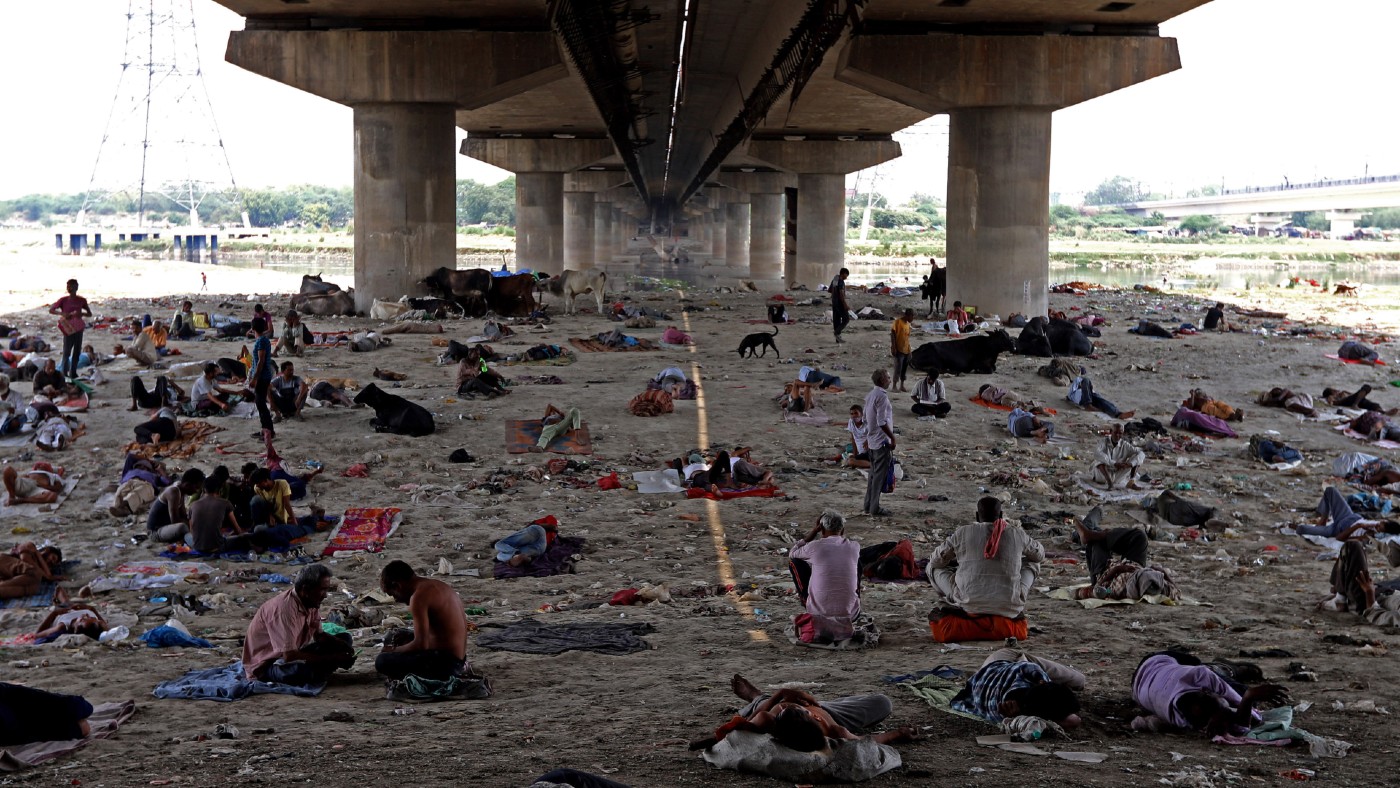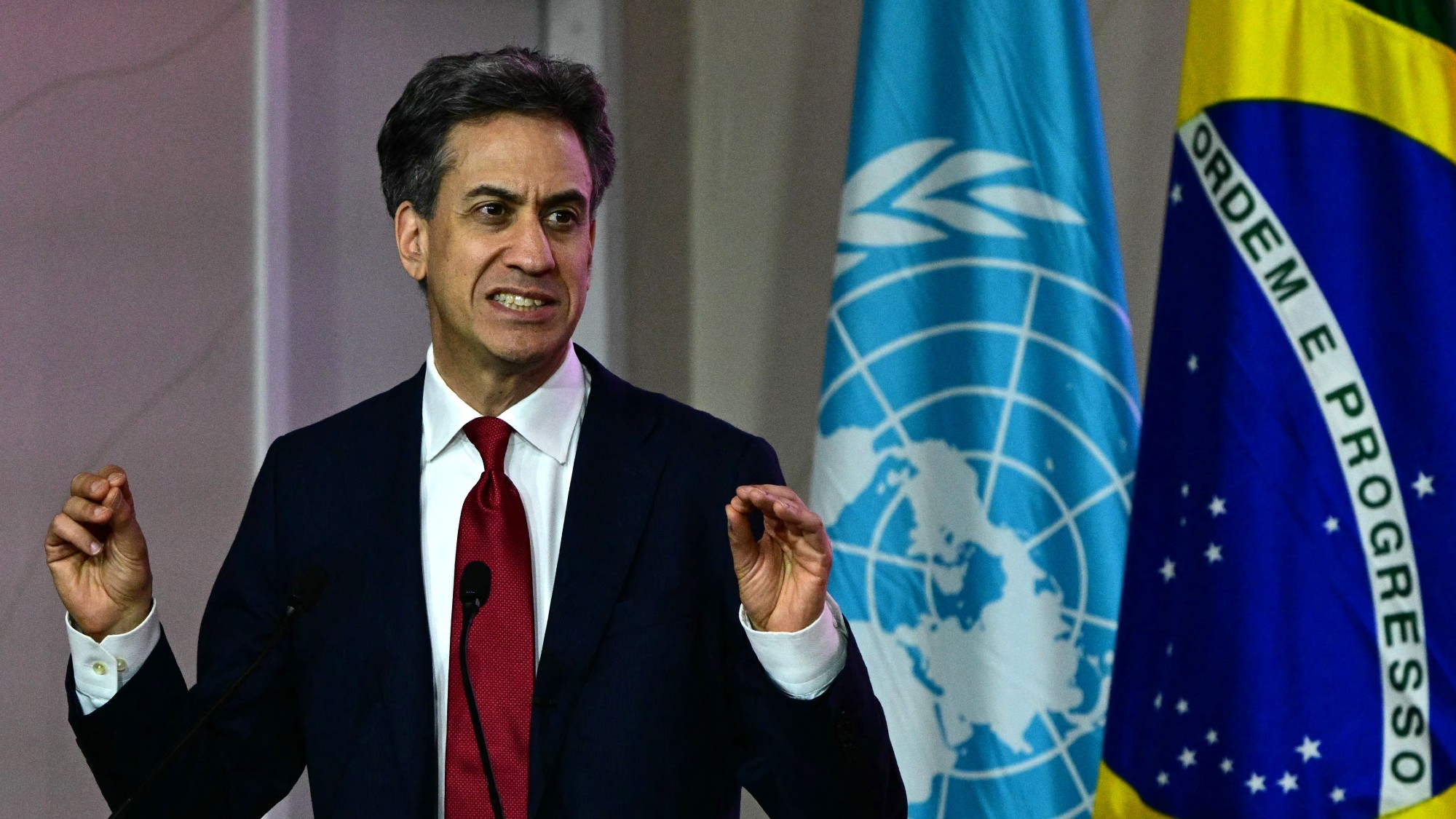How India’s heatwave is pushing the limits of human endurance
Dozens are thought to have died, schools have been forced to close and taps have run dry

“India has been in the grip of what seems like an eternity of heatwaves,” said The Hindu (Chennai). The punishment started in March; then followed the hottest April in 122 years in central and northwest India. Since then, temperatures in some Indian cities have regularly exceeded 45C, while parts of Pakistan have recorded highs in excess of 47C.
Dozens of people are thought to have died, schools have been forced to close, and taps have run dry. In late April, a landfill site in New Delhi spontaneously combusted, sending noxious fumes into the sky. Surging demand for electricity to run air conditioning systems has led to power outages lasting up to eight hours a day; crops have been scorched. And to compound the misery, “there is little respite expected” in the worst-hit areas until June, when monsoon rains should finally arrive.
“Heatwaves are common at this time of year,” said Sandhya Ramesh in The Print (New Delhi). May and June are India’s hottest months. But conditions have been uniquely harsh this year, thanks to a “heat dome” over south Asia – a lingering area of high pressure that traps warm air beneath it like a lid on a pan.
The Week
Escape your echo chamber. Get the facts behind the news, plus analysis from multiple perspectives.

Sign up for The Week's Free Newsletters
From our morning news briefing to a weekly Good News Newsletter, get the best of The Week delivered directly to your inbox.
From our morning news briefing to a weekly Good News Newsletter, get the best of The Week delivered directly to your inbox.
In drier areas, surface (as opposed to air) temperatures have exceeded 60C, contributing to a sharp uptick in forest fires. But in humid areas, conditions have become nearly impossible for humans to endure, said The Statesman (Kolkata). Public health officials talk about “wet bulb” temperatures – measured by wrapping a thermometer in a wet cloth. These give a rough idea of how the human body will cope. In dry heat, evaporation lowers the temperature. But in high humidity, the water can’t evaporate, so there is no cooling effect.
On 1 May, the wet bulb temperature in Chennai, in India’s southeast, hit 31C, making physical activity dangerous. If it were to reach 35C, our bodies would not be able to cope. Even the fittest people would die in about six hours.
Clearly, we can no longer bat away the brutal realities of climate change, said Pratap Bhanu Mehta in The Indian Express (Noida). In 2019, The Lancet estimated 356,000 people died due to excess heat globally. With temperatures soaring, that figure will only go up.
Many Indian cities now have “heat action plans”, said The Economist. Work shifts are changed to keep people out of the sun; extra medical centres are opened; roofs are painted with reflective paint. But there’s only so much that can be done. Unless carbon emissions are reduced, “heatwaves will keep getting more severe and harder to adapt to”.
A free daily email with the biggest news stories of the day – and the best features from TheWeek.com
-
 Why are micro-resolutions more likely to stick?
Why are micro-resolutions more likely to stick?In the Spotlight These smaller, achievable goals could be the key to building lasting habits
-
 What will happen in 2026? Predictions and events
What will happen in 2026? Predictions and eventsIn Depth The new year could bring peace in Ukraine or war in Venezuela, as Donald Trump prepares to host a highly politicised World Cup and Nasa returns to the Moon
-
 Why is Trump’s alleged strike on Venezuela shrouded in so much secrecy?
Why is Trump’s alleged strike on Venezuela shrouded in so much secrecy?TODAY'S BIG QUESTION Trump’s comments have raised more questions than answers about what his administration is doing in the Southern Hemisphere
-
 Environment breakthroughs of 2025
Environment breakthroughs of 2025In Depth Progress was made this year on carbon dioxide tracking, food waste upcycling, sodium batteries, microplastic monitoring and green concrete
-
 ‘Like a gas chamber’: the air pollution throttling Delhi
‘Like a gas chamber’: the air pollution throttling DelhiUnder The Radar Indian capital has tried cloud seeding to address the crisis, which has seen schools closed and outdoor events suspended
-
 How will climate change affect the UK?
How will climate change affect the UK?The Explainer Met Office projections show the UK getting substantially warmer and wetter – with more extreme weather events
-
 Can the UK do more on climate change?
Can the UK do more on climate change?Today's Big Question Labour has shown leadership in the face of fraying international consensus, but must show the public their green mission is ‘a net benefit, not a net cost’
-
 The future of the Paris Agreement
The future of the Paris AgreementThe Explainer UN secretary general warns it is ‘inevitable’ the world will overshoot 1.5C target, but there is still time to change course
-
 Are we entering a ‘golden age’ of nuclear power?
Are we entering a ‘golden age’ of nuclear power?The Explainer The government is promising to ‘fire up nuclear power’. Why, and how?
-
 The world’s uncontacted peoples under threat
The world’s uncontacted peoples under threatThe Explainer Indigenous groups face ‘silent genocide’ from growing contact with miners, missionaries and influencers
-
 How clean-air efforts may have exacerbated global warming
How clean-air efforts may have exacerbated global warmingUnder the Radar Air pollution artificially cooled the Earth, ‘masking’ extent of temperature increase